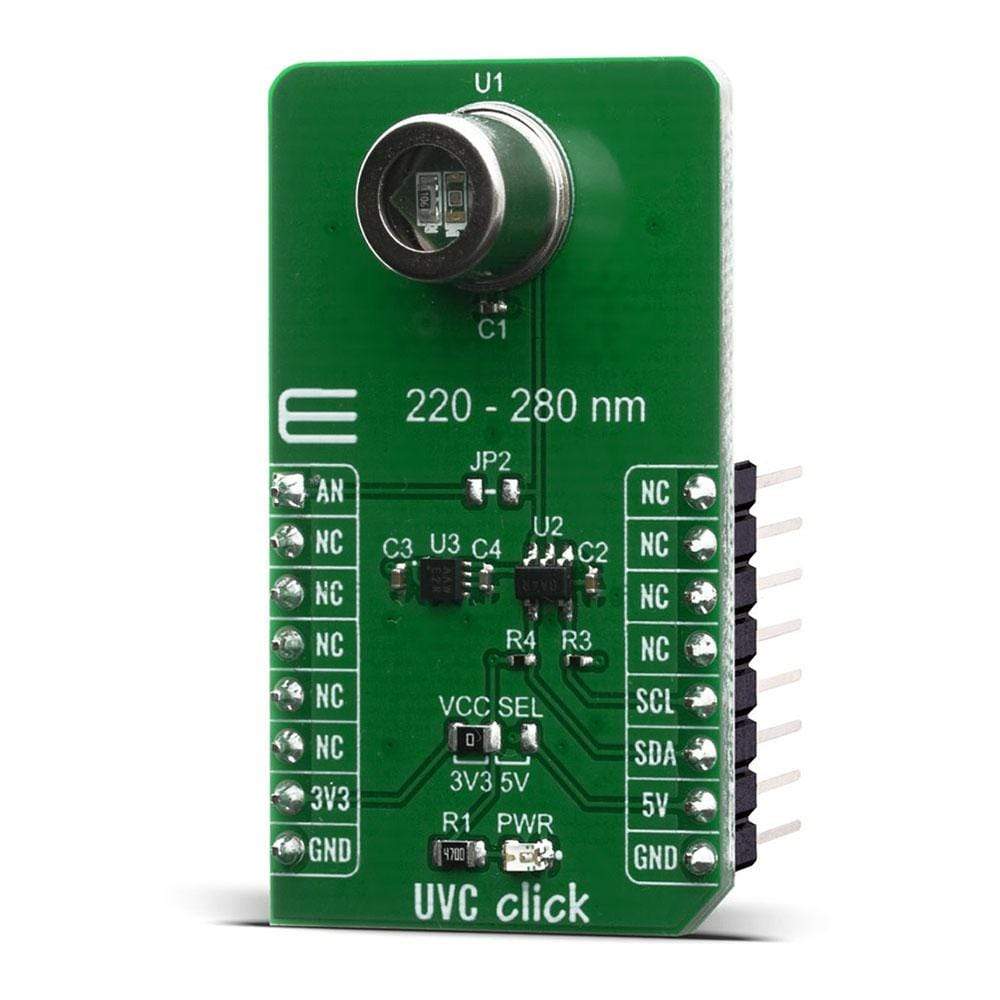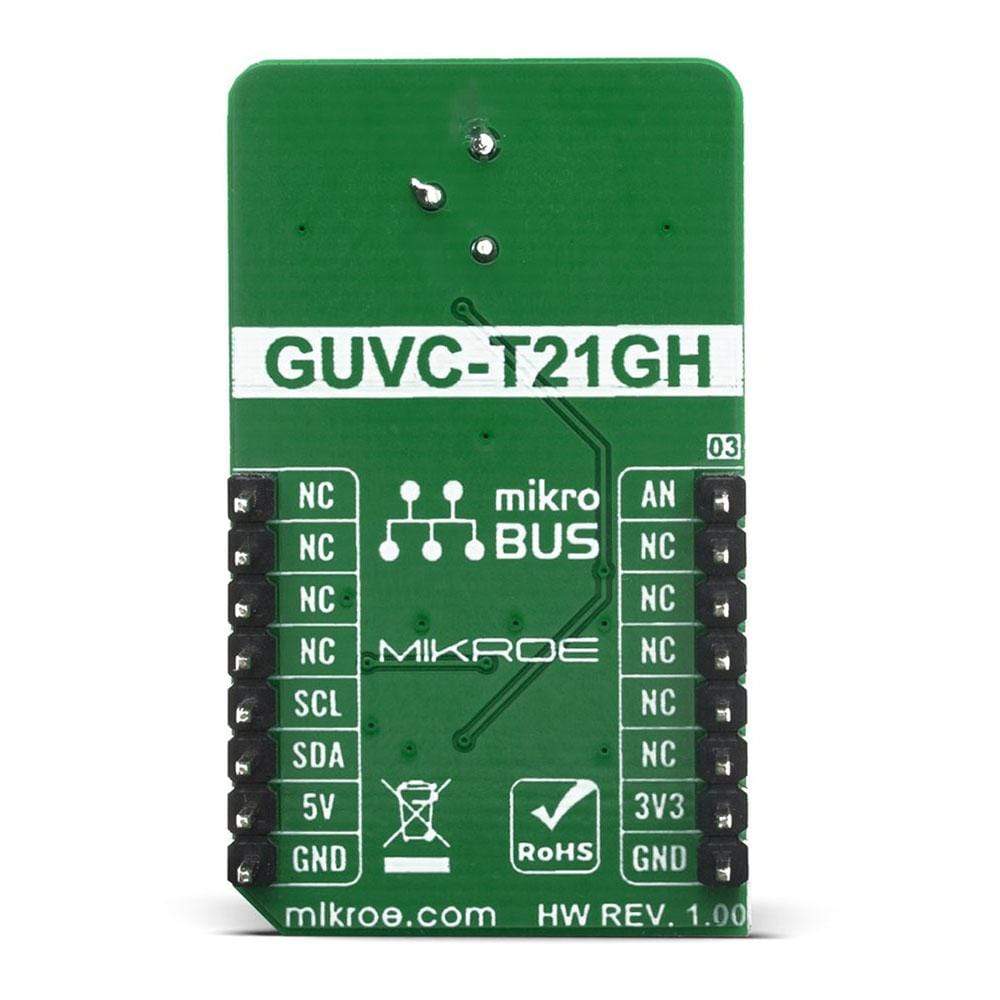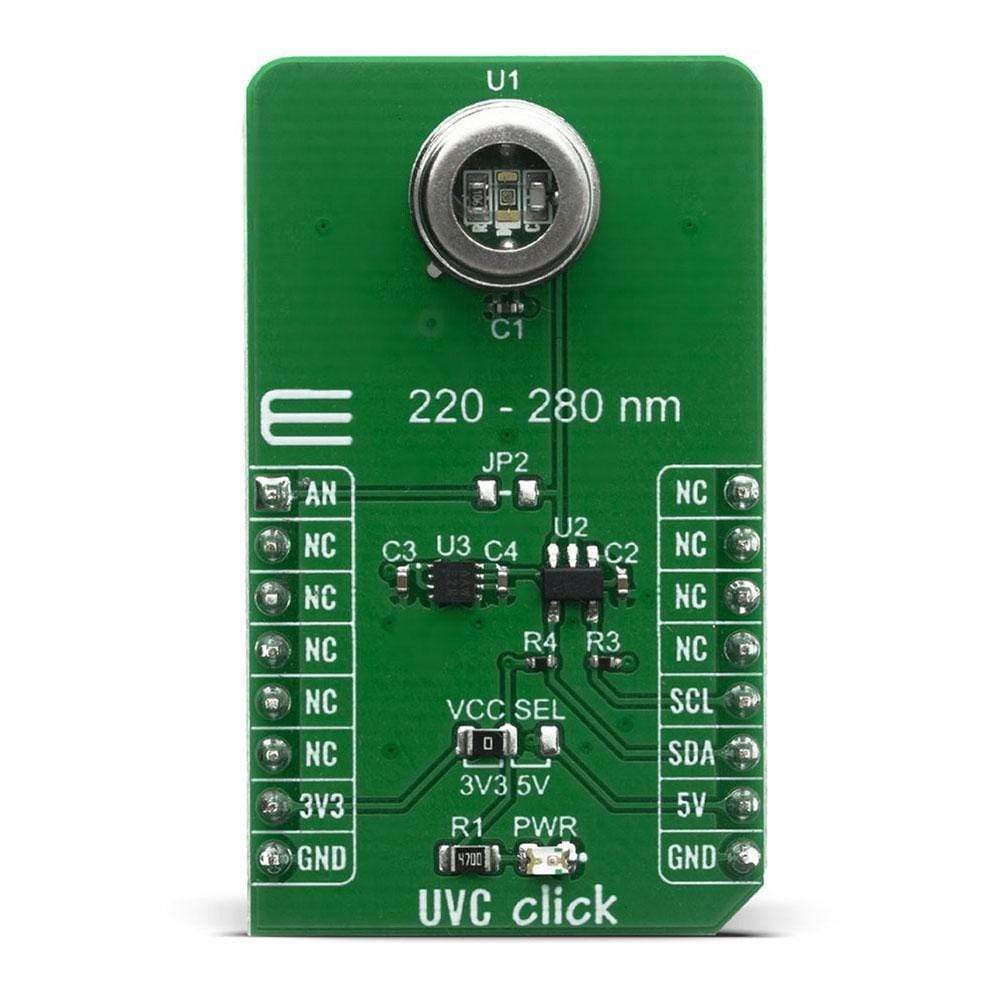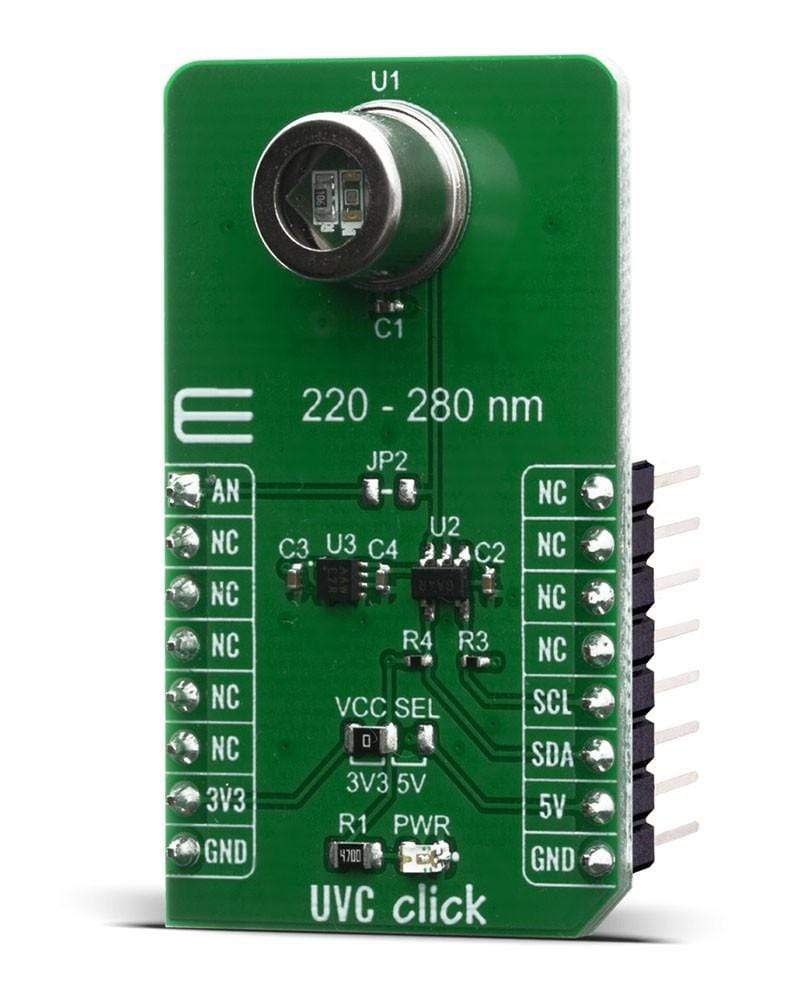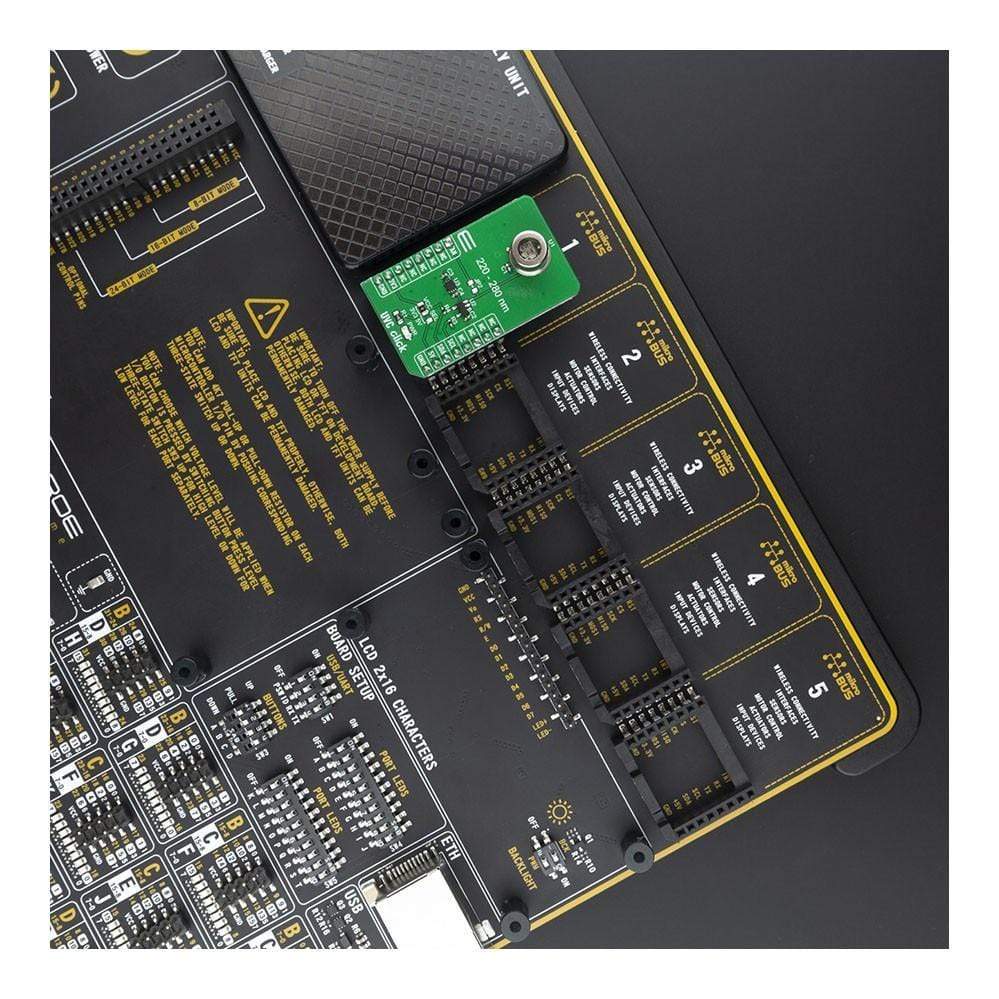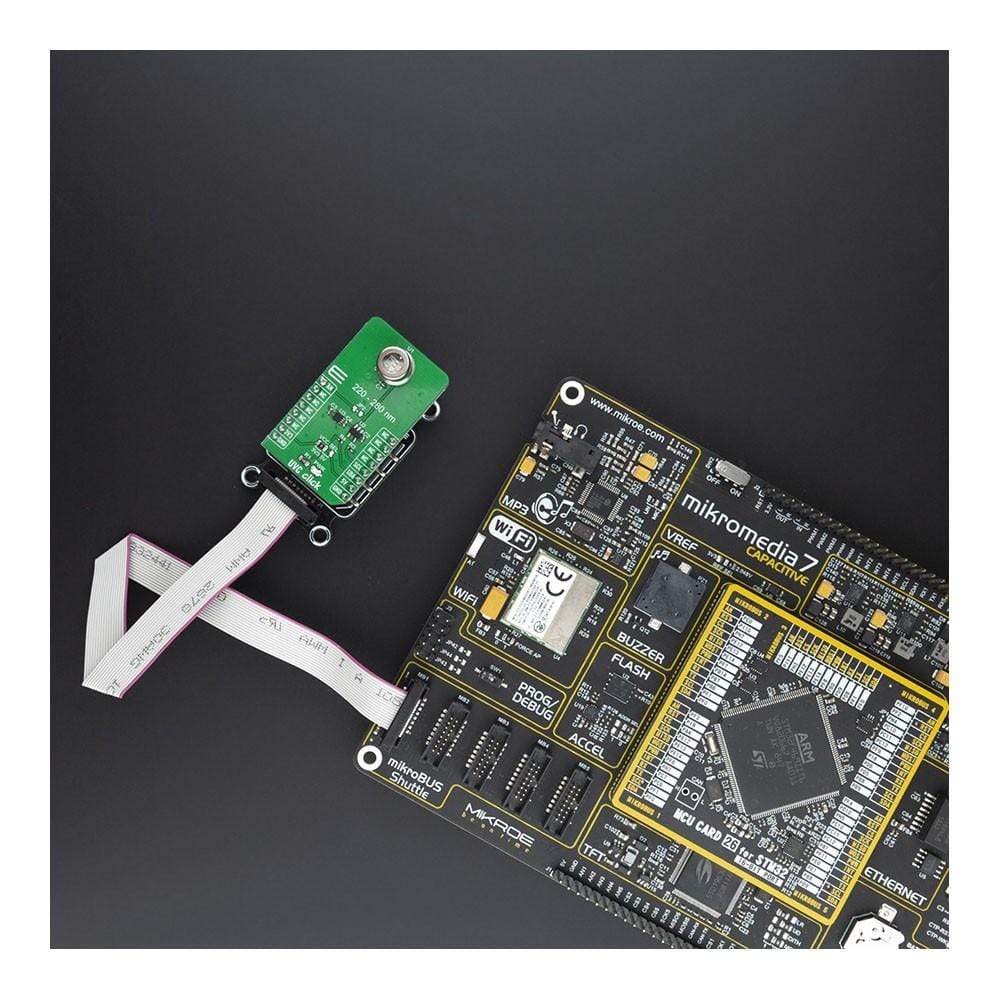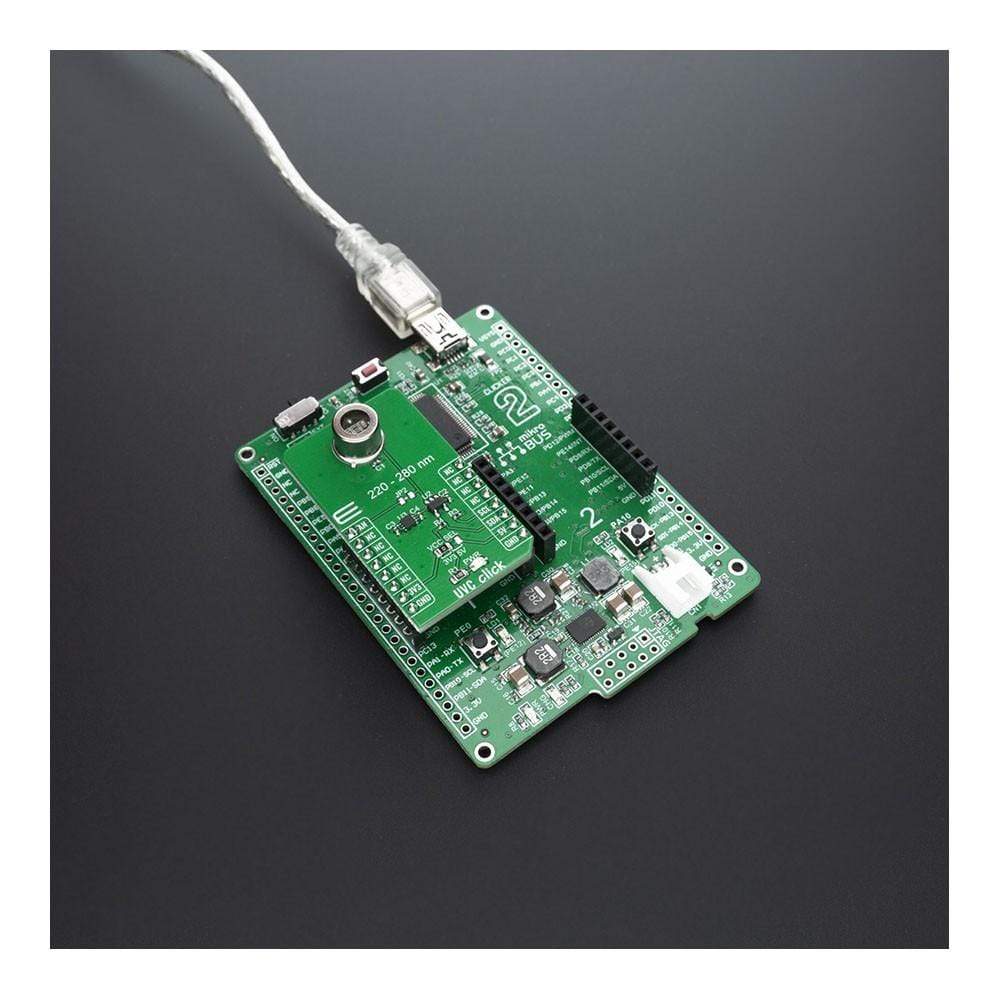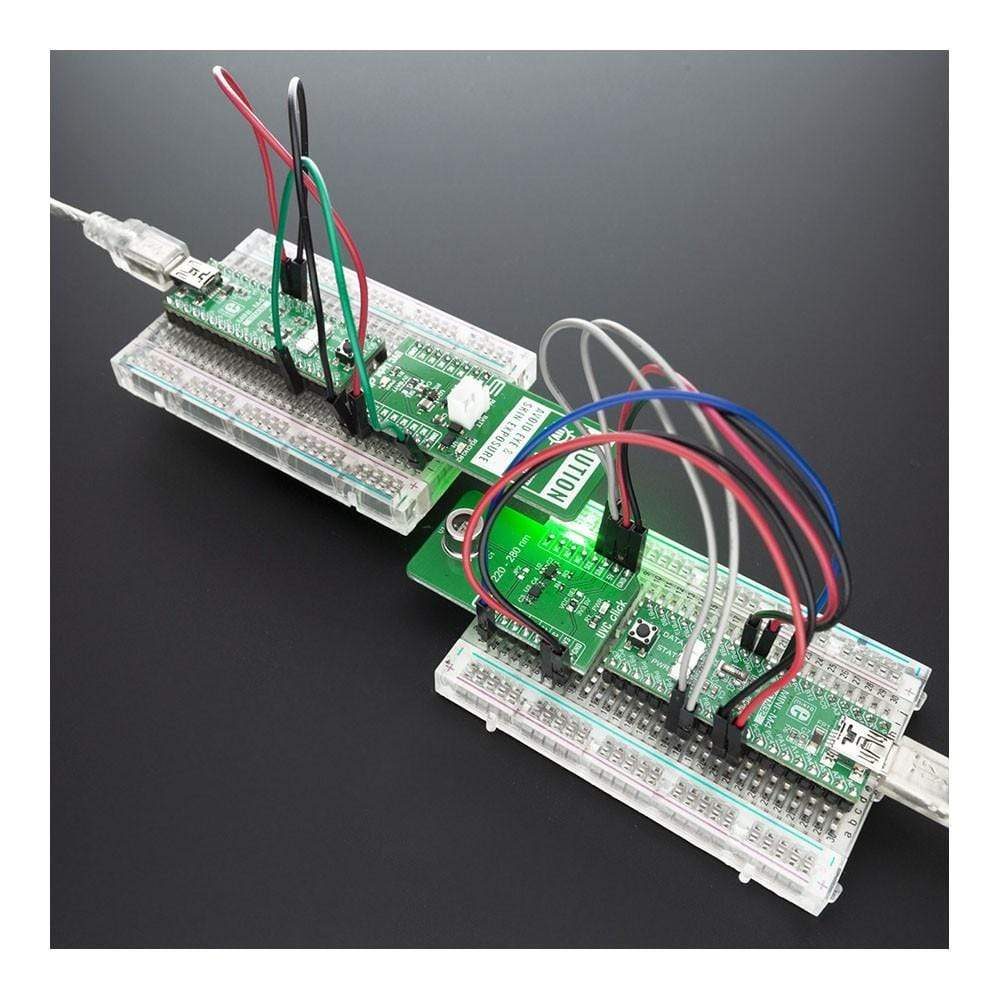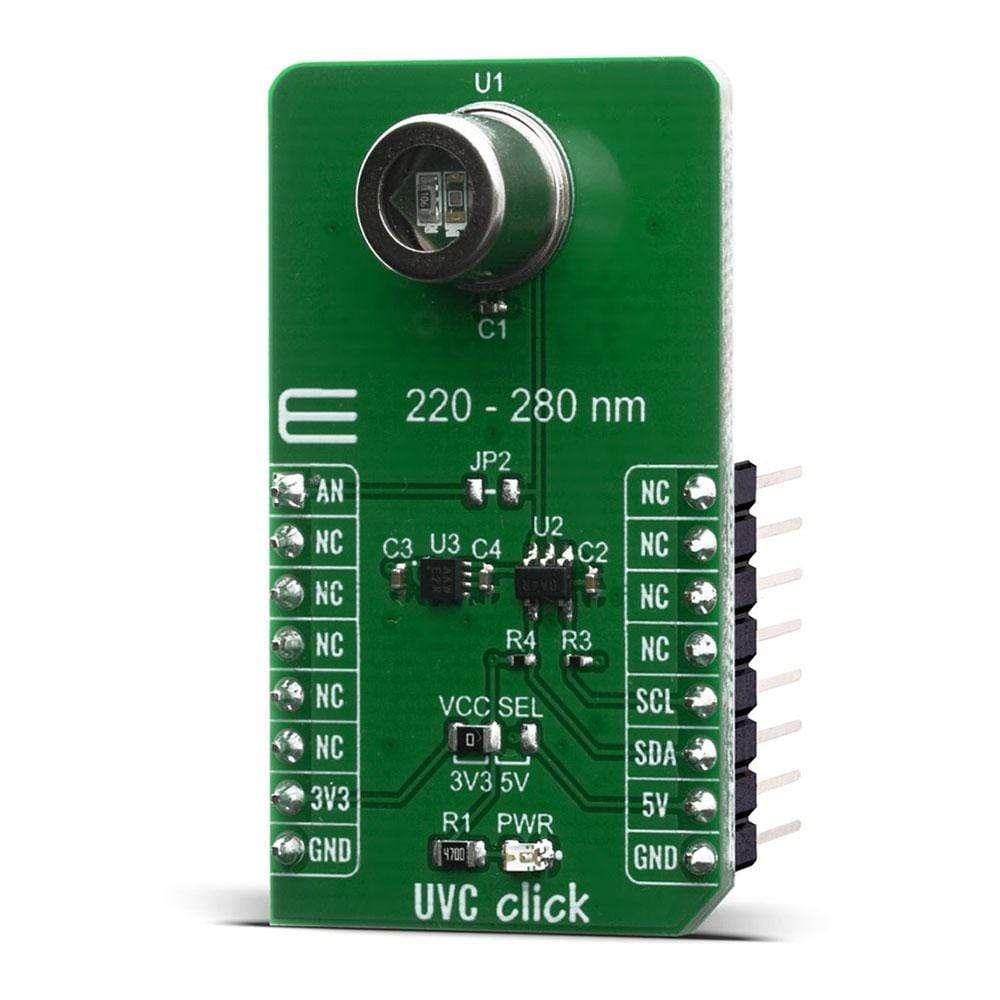
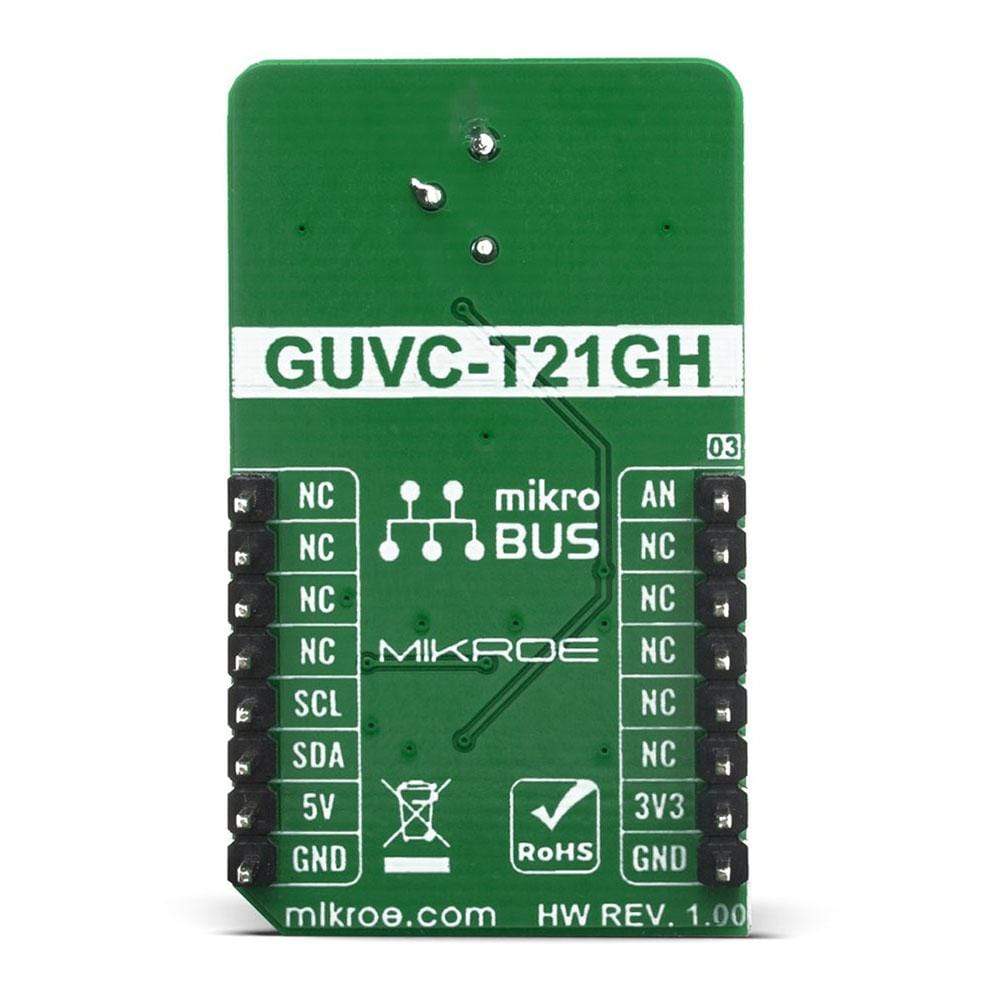
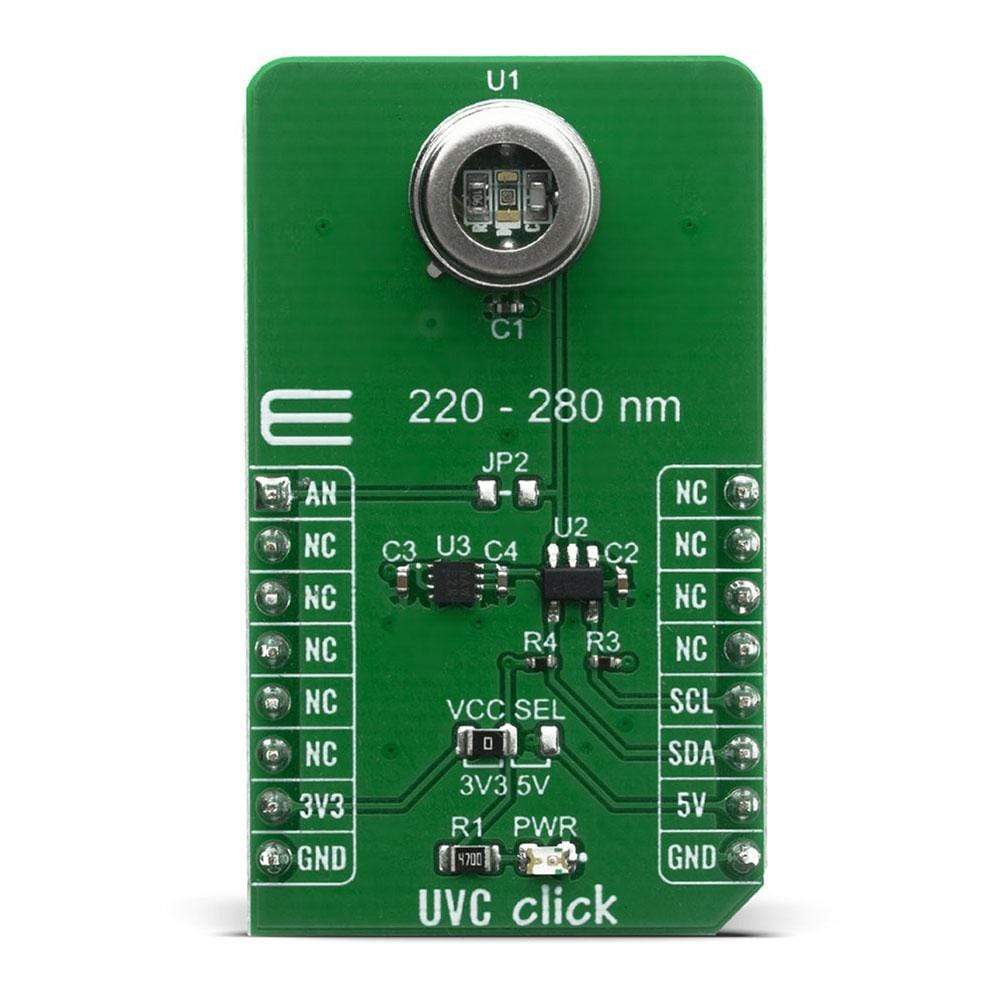
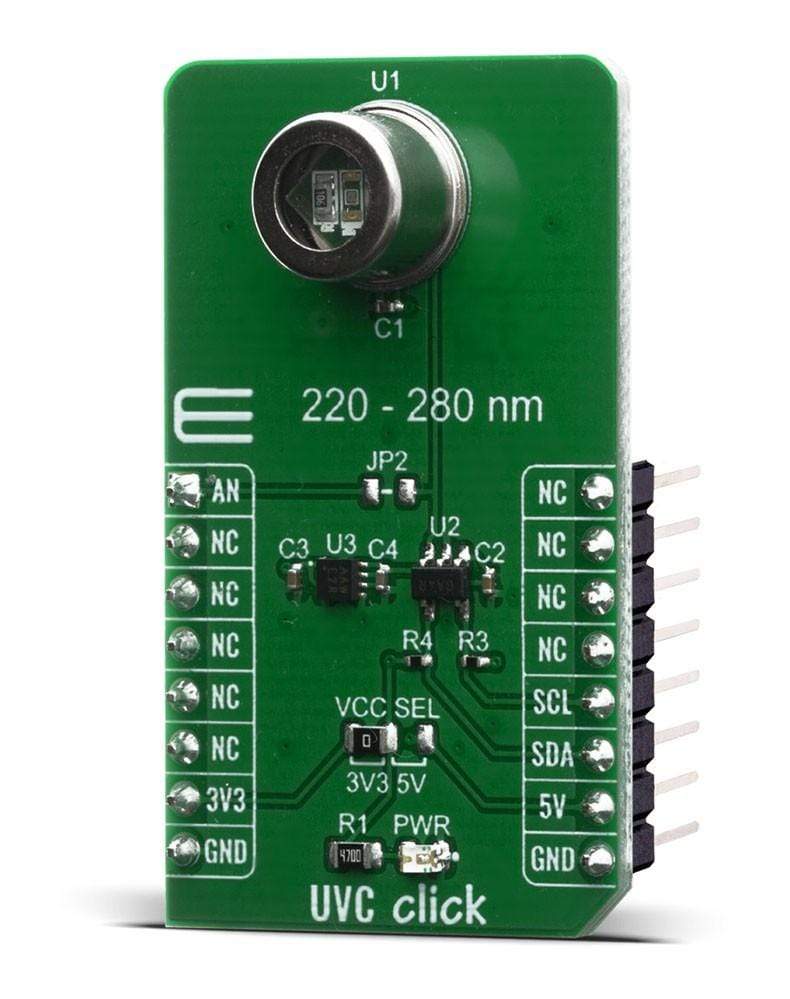
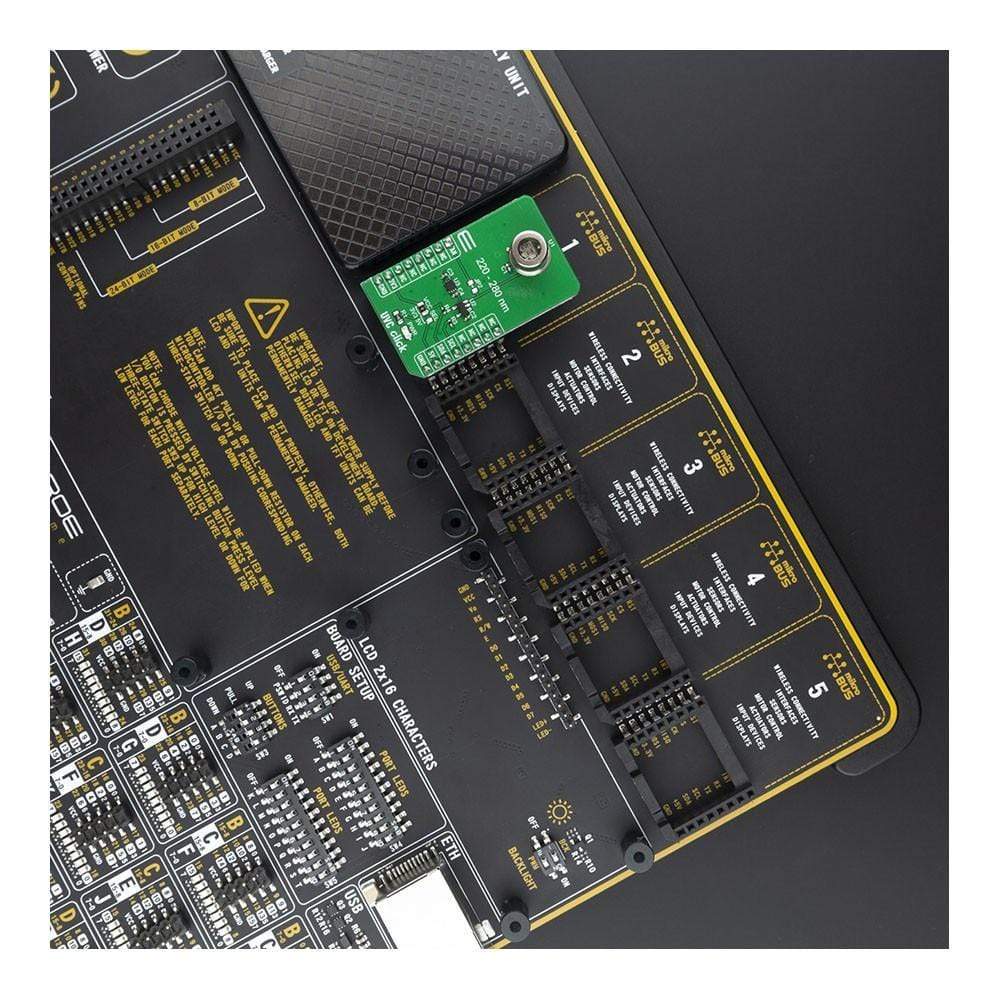
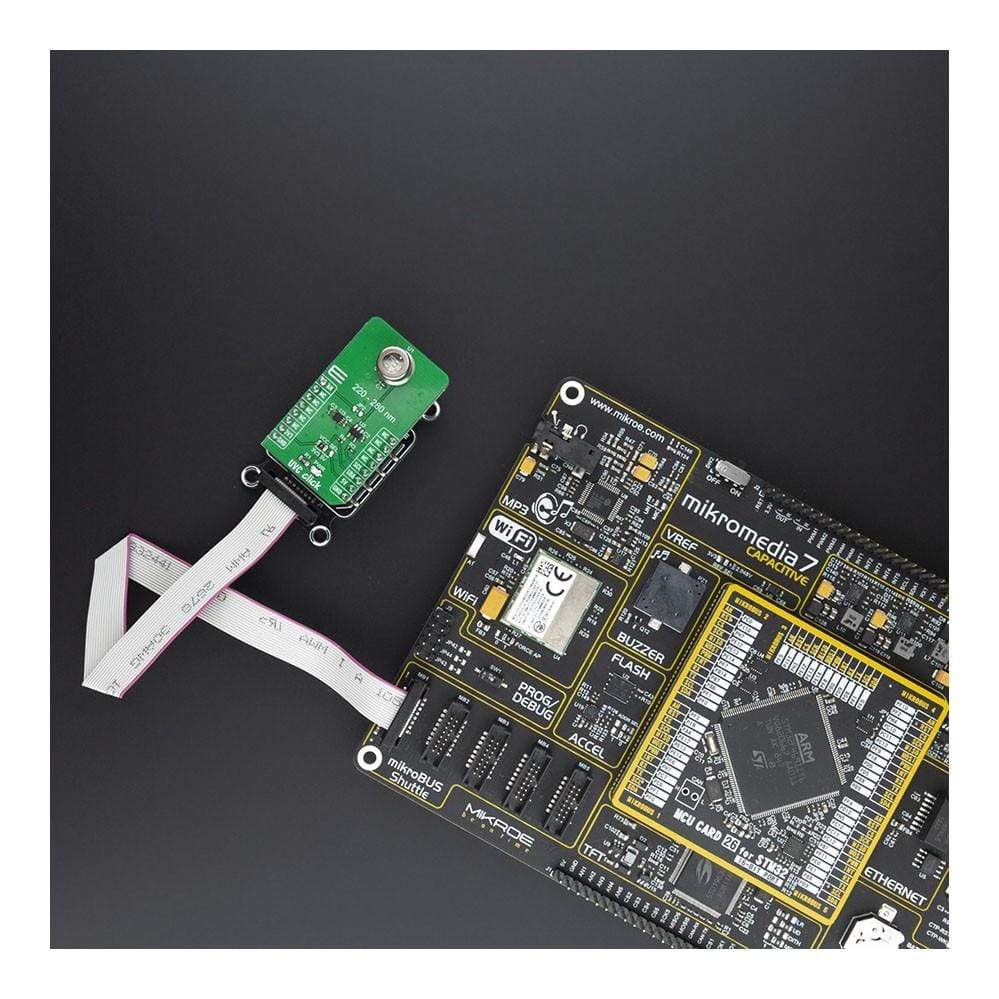
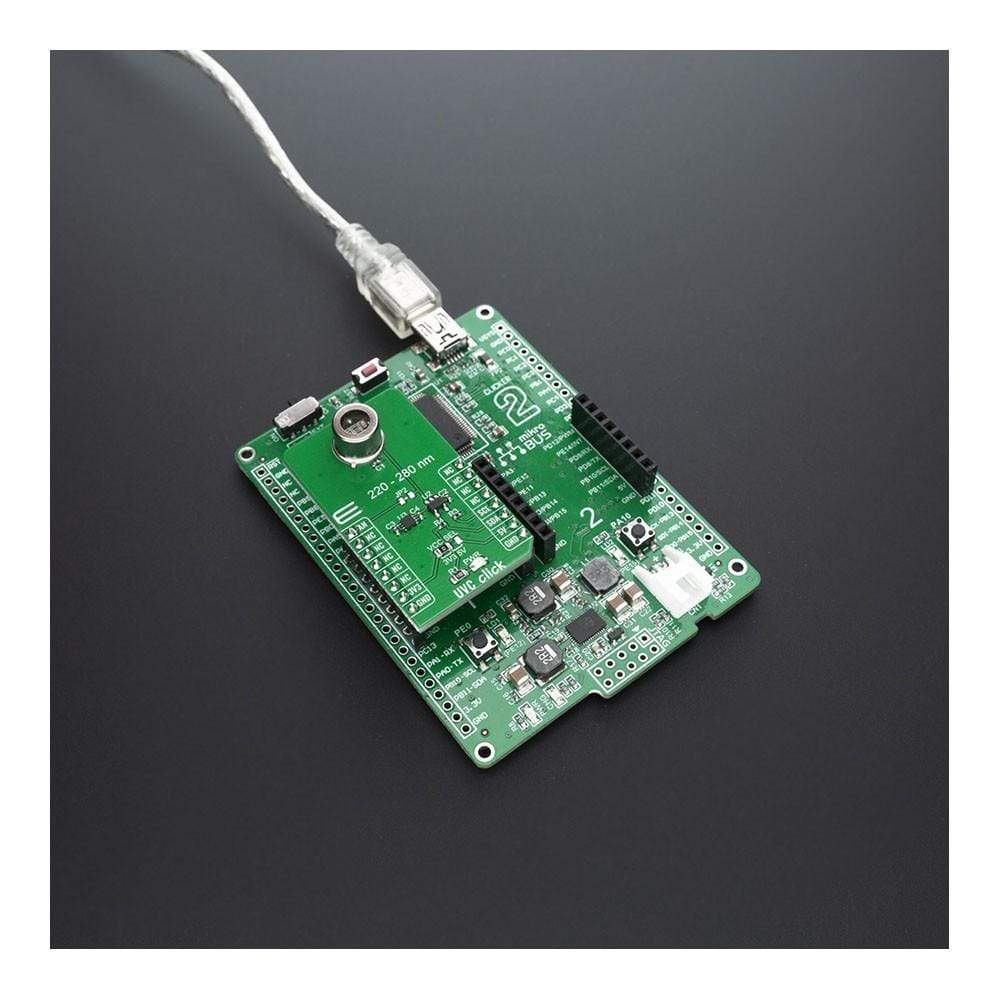
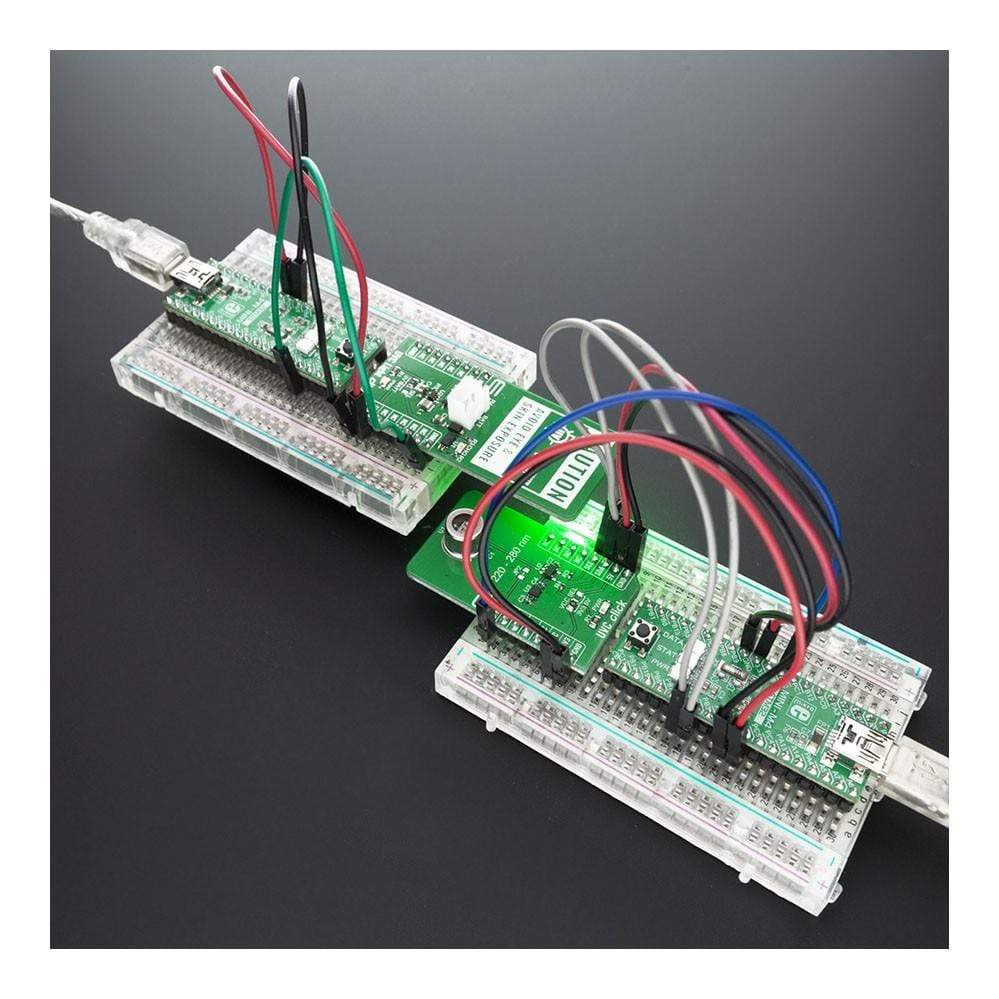
Overview
The UVC Click Board™ is an ultraviolet sensing board that complements UVC Light Click Board™ for an ultimate ultraviolet solution. The board is based on a GUVC-T21GH ultraviolet sensor from GenUV, capable of measuring UVC spectrum in the range of 220nm up to 280nm and light intensity from 0mW/cm² up to 9.3mW/cm².
With high sensitivity and good solar blindness, it can be a perfect solution for monitoring sterilisation lamps used in ultraviolet germicidal irradiation (UVGI), a disinfection method that is becoming an essential tool in the battle against viruses and bacteria.
The UVC Click Board™ has two ways of reading UV sensor output, direct analogue output value and digital output thanks to the MCP3221 ADC converter.
Downloads
Das UVC Click Board™ ist eine Ultraviolett-Sensorplatine, die ergänzt UVC Light Click Board™ für eine ultimative Ultraviolettlösung. Die Platine basiert auf einem Ultraviolettsensor GUVC-T21GH von GenUV, der UVC-Spektrum im Bereich von 220 nm bis 280 nm und Lichtintensitäten von 0 mW/cm² bis 9,3 mW/cm² messen kann.
Dank seiner hohen Empfindlichkeit und guten Sonnenblindheit kann es eine perfekte Lösung für die Überwachung von Sterilisationslampen sein, die bei der keimtötenden ultravioletten Bestrahlung (UVGI) verwendet werden, einer Desinfektionsmethode, die im Kampf gegen Viren und Bakterien zu einem unverzichtbaren Instrument wird.
Der UVC Click Board™ verfügt über zwei Möglichkeiten zum Lesen der UV-Sensorausgabe: direkter analoger Ausgabewert und digitale Ausgabe dank des MCP3221-ADC-Konverters.
| General Information | |
|---|---|
Part Number (SKU) |
MIKROE-4144
|
Manufacturer |
|
| Physical and Mechanical | |
Weight |
0.019 kg
|
| Other | |
Country of Origin |
|
HS Code Customs Tariff code
|
|
EAN |
8606018717637
|
Warranty |
|
Frequently Asked Questions
Have a Question?
Be the first to ask a question about this.

